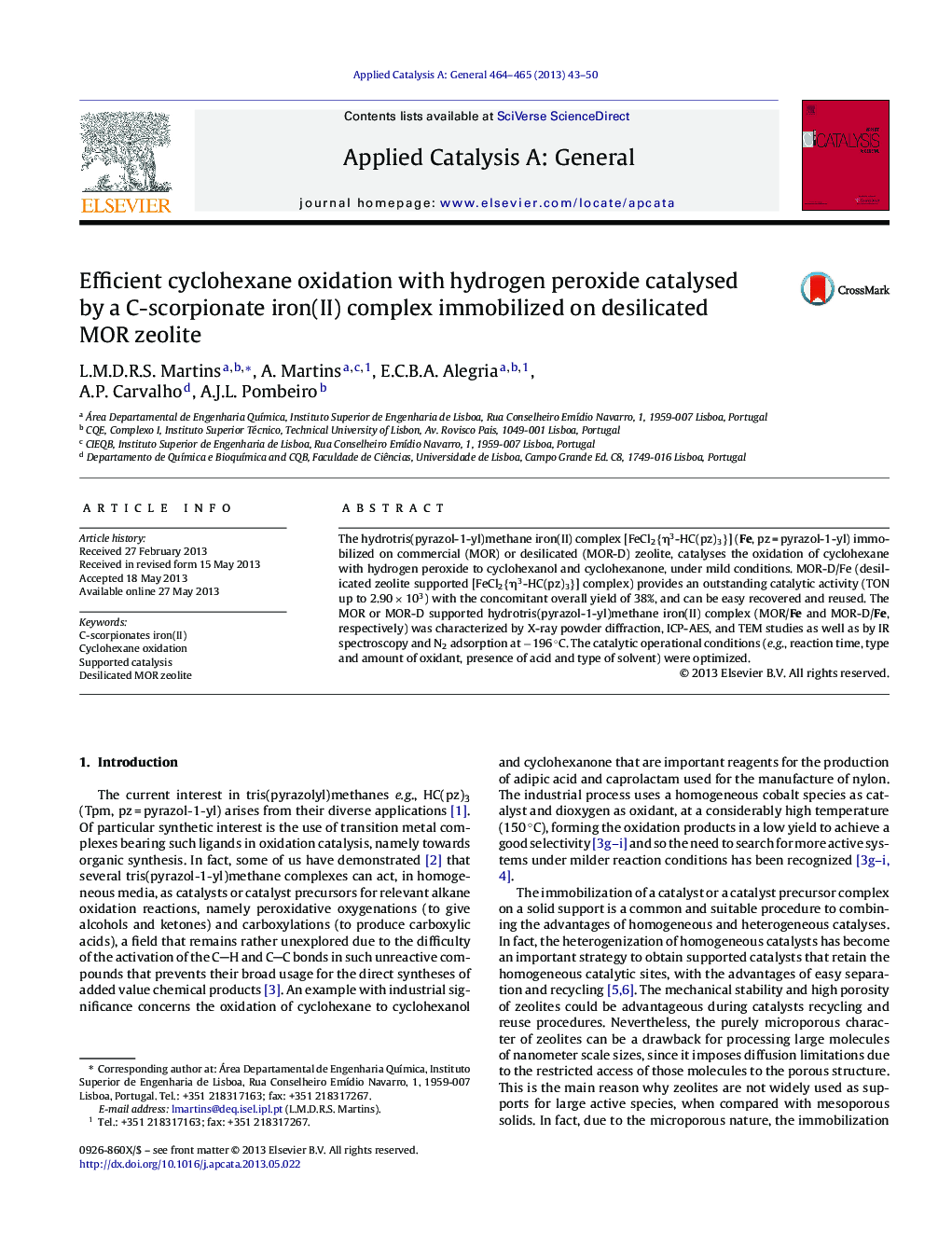| Article ID | Journal | Published Year | Pages | File Type |
|---|---|---|---|---|
| 40104 | Applied Catalysis A: General | 2013 | 8 Pages |
•The C-scorpionate Fe(II) complex is suitably supported on desilicated MOR zeolite.•Generation of mesoporosity in commercial MOR improves the anchorage of Fe complex.•The heterogeneous Fe system is notably efficient for the oxidation of cyclohexane.•The catalytic activity of the Fe complex is highly improved by heterogenization.
The hydrotris(pyrazol-1-yl)methane iron(II) complex [FeCl2{η3-HC(pz)3}] (Fe, pz = pyrazol-1-yl) immobilized on commercial (MOR) or desilicated (MOR-D) zeolite, catalyses the oxidation of cyclohexane with hydrogen peroxide to cyclohexanol and cyclohexanone, under mild conditions. MOR-D/Fe (desilicated zeolite supported [FeCl2{η3-HC(pz)3}] complex) provides an outstanding catalytic activity (TON up to 2.90 × 103) with the concomitant overall yield of 38%, and can be easy recovered and reused. The MOR or MOR-D supported hydrotris(pyrazol-1-yl)methane iron(II) complex (MOR/Fe and MOR-D/Fe, respectively) was characterized by X-ray powder diffraction, ICP-AES, and TEM studies as well as by IR spectroscopy and N2 adsorption at −196 °C. The catalytic operational conditions (e.g., reaction time, type and amount of oxidant, presence of acid and type of solvent) were optimized.
Graphical abstractFigure optionsDownload full-size imageDownload high-quality image (61 K)Download as PowerPoint slide
